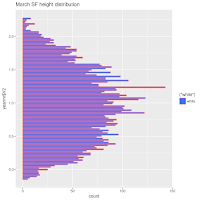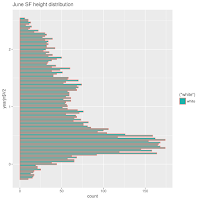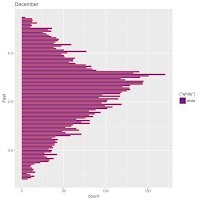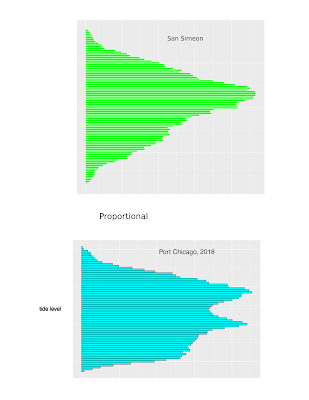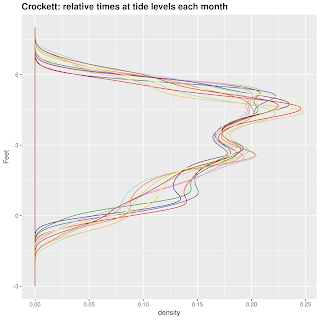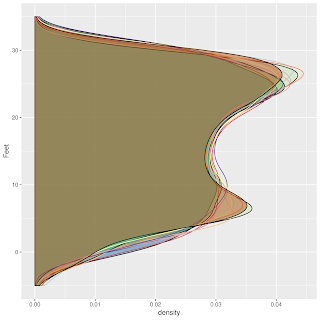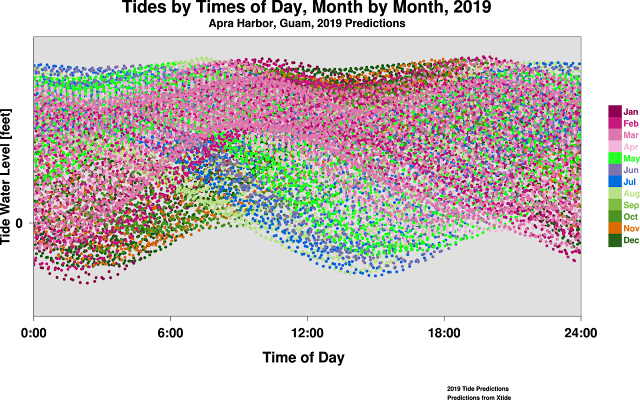I have tried to at least review all the literature I can lay my hands on, about anything having to do with tides. Several books, and a number of papers stand apart. Another time, I plan to generate a list. Real Soon Now (TM). Among books, one of the classic textbooks of Oceanography is the 1961 two-volume
Physical Oceanography, by Albert Defant. In Volume 2 are found lengthy treatments of various aspects of tides. It is available in English translation on Archive.org, in various formats:
Defant. Physical Oceanography, V. II. No other book has gone to that much extent, particularly in discussion of the features of tides of various locations around the world.
As I prefer printed books, I checked volume II out from the UC Berkeley Libraries. A troubling revelation was received.
It has been my unfortunate observation that not all academics are community minded. At UCSB, for example, many of the previously numerous volumes dealing with fishing have been stolen or otherwise have disappeared. Of those that remained as of about 1983-1984, I found several with pages removed, presumably because of their overriding usefulness to someone---hopefully who would make a contribution to the greater body of knowledge, to compensate for this selfish act.
More distressing was to find pages torn out in exactly two places in one copy of Defant's volume II from the UC Berkeley Library. These pages I was able to locate in the Internet Archive (archive.org), as *tif files; I printed these pages out and placed them in the books so they would be available to anyone who referred to this book in the future---possibly me!
Bookmarks left in Defant by an astute reader
Beyond the thoughtless act of removing these pages, the perpetrator left behind a bookmark: once I had noticed these pages were missing: the content of the missing pages was astounding. May I turn a blind eye to copyrights? Well, I think this book is no longer covered by those draconian and troublesome restrictions; I shall present the missing pages here.
The first page was an accounting of Harmonic Constituents.
The first of these two pages is the most important: a listing of Principal harmonic components (constituents). All of these images are *.tif files. You may click on them to enlarge them, and they are printable.
2. Pages later in the book: remarkable! How to interpret the above.
I do not know who removed these pages. One can appreciate their unique value, even from the distance of over 50 years.
In the Caroline Islands, experts value their knowledge---particularly of navigation, fishing, or cures---highly. They fear to share it with others, lest it be squandered, and their personal power diminished. A traditional expert will choose very carefully whom he may train in his knowledge or skills. Likewise, A prospective pupil, would cultivate the expert's favor, even to the extent of sharing a fish with a navigator every time he goes fishing, for tens of years! Eventually, the expert may take the hopeful understudy aside and offer to tutor him. This is a very serious matter.
Likewise in Western society, knowledge is jealously guarded. Beyond arcane practices in academic culture, and, say, the scribbled handwriting and esoteric vocabulary, or even shoptalk among craftsmen, many more examples could be adduced.
I cannot know what was going through the mind of the thief of these pages. Perhaps this was in a time preceding xerox machines. Or maybe he had no change, was late for his ride, or faced a deadline that he or she could not make without this precious knowledge. Did a librarian---whose annoying dispositions used to be legendary---refuse to check the book out to our aspirant to this knowledge?
Unfortunately, I cannot render judgement on this seemingly callous and self-serving act. The outcome, though, is a positive one: I might not have made such careful note of these pages, had they not been missing.
It's good stuff.

